Dear Stackoverflow community,
Once again, I have a question concerning the ggplot2 possibilities of R. Before I start with explaining my problem, an example of a dataframe is provided here below:
age <- c(12, 13, 14, 15, 12, 13, 14, 15, 12, 13, 14, 15, 12, 13, 14, 15, 12, 13, 14, 15)
anticoagulation <- c(0, 1, 0, 1, 1, 0, 1, 0, 0, 1, 0, 1, 1, 0, 1, 0, 0, 1, 0, 1)
atc <- c(1, 0, 2, 0, 1, 2, 1, 0, 2, 0, 1, 2, 1, 0, 2, 0, 1, 2, 0, 0)
df <- data.frame(age, anticoagulation, atc)
- anticoagulation coding: 0 = no anticoagulation, 1 = received anticoagulation
- atc coding: 0 = nitrofurantoin, 1 = fosfomycin, 2 = trimethoprim
I want to visualise the differences in anticoagulation prescription per age group and per atc group. What I have done so far:
frame <- aggregate(df$anticoagulation, by=list(df$age), FUN=length)
frame$age <- frame$Group.1
frame$n <- frame$x
frame <- frame [,3:4]
my_table<- table(df$age, df$anticoagulation)
table <- as.data.frame.matrix(my_table)
frame$n_noanti <- table$"0"
frame$n_yesanti <- table$"1"
frame$per_yesanti <- (frame$n_yesanti/frame$n)*100 # percentage
frame$per_noanti <- (frame$n_noanti/frame$n)*100 # percentage
ggplot(frame, aes(x=x) ) +
geom_bar( aes(x = reorder (age, -per_yesanti), y =per_yesanti), stat="identity", fill="#69b3a2" ) +
geom_label(aes(x=15, y=100, label="Used anticoagulants"), color="#69b3a2")+
geom_bar( aes( x =reorder (age, -per_noanti), y=-per_noanti), stat="identity", fill="#404080" ) +
geom_label( aes(x=15, y=-100, label="No anticoagulants"), color="#404080") +
theme(axis.text.x=element_blank()) +
xlab ("Age") +
ylab ("Percentages of how many women used anticoagulants")+
ggtitle("Distribution of anticoagulants per age")+
theme(plot.title = element_text(hjust = 0.5), text = element_text(size=15))
Output Output of ggplot mirror density here above
However, I would like to have such an graph but with stacked bars like this: Example of stacked bars
The stacked parts are based on the atc-coding. I have tried to only make a stacked graph, but that has failed miserably.
I have tried it with the code 'aggregate', but I am stuck with what to use and what to merge together.
frame2 <- aggregate(frame$anticoagulation, by=list(frame$age, frame$atc), FUN=length)
However, this aggregation code makes it too long to use.
What I have also tried, is using a separate aggregate code for atc vs age and add that to the 'frame'.
atc2<- table(df$age, df$atc)
t_atc2 <- as.data.frame.matrix(atc2)
frame$n_nitro <- t_atc2$"0"
frame$n_fosfo <- t_atc2$"1"
frame$n_trim <- t_atc2$"2"
But still, I cannot get the stacked function to work. My attempt to do a stacked bar with only the percentage of anticoagulation=yes (coding=1) =
ggplot(frame, aes(fill = n_nitro+n_fosfo+n_trim, y=per_yesanti, x=age)) +
geom_bar(position="stack", stat="identity") +
ggtitle("Anticoagulation per age")
graph: No distinction between the 2 atc groups
I hope someone can mix the two graphs together. If that is very impossible than only a stacked graph with the percentage of the anticoagulation=1 (per_yesanti) is good as well.
So, in short, if the mixed graph is very difficult. How can I made the following graph (so only 1 graph):
- only details with anticoagulants = 1/ yes
- details of anticoagulants has to be in percentage (calculated by total anticoagulants yes/no)
- x-axis is per age
- de bars have to be filled in by atc
Like this: enter image description here
Thanks in advance!


